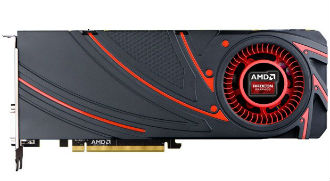 A few weeks ago AMD introduced its Volcanic Islands products at an event in Hawaii. Most of the line-up were just rebrands, but the flagship R9 290X and R9 290 weren’t.
A few weeks ago AMD introduced its Volcanic Islands products at an event in Hawaii. Most of the line-up were just rebrands, but the flagship R9 290X and R9 290 weren’t.
The Hawaii cards are based on all new silicon, 6.2bn transistors crammed onto a 28nm die. AMD did not announce the prices at the event, but a couple of weeks later it launched the R9 290X at $549. The price was lower than expected and it forced Nvidia to slash the price of the GTX 780 by $150.
Just as Nvidia countered the R9 290X, AMD decided to make its life miserable once again. The Hawaii Pro version of the card, the R9 290, launched at $399 – making it $100 cheaper than the GTX 780, which went down from $649 to $499 last week.
There is, however, a slight problem for Nvidia. The R9 290 ends up significantly faster than the GTX 780 and in some cases it can even give the $999 GTX Titan a run for its money.
So, the new card is $100 cheaper than what Nvidia has to offer, yet it’s faster. There is one problem though, reviewers report the R9 290 can get very loud, but it seems like a small price to pay considering the price/performance ratio. In addition, it’s only a matter of time before AIB partners come up with non-reference designs, with custom coolers to keep the noise down.
Nvidia was already forced into two price cuts following AMD’s launch. First it slashed the prices of its sub-$199 products to compete with AMD’s rebranded R7-series. Then it slashed the prices of the GTX 780 and GTX 770, only to be undercut by AMD’s new $399 card. Most punters were expecting the R9 290 to end up at ~$449, but like we said last month, AMD had a couple of good reasons to launch it at $399 – and it did.
Nvidia simply doesn’t have much wiggle room left. Perhaps it’s feeling a bit like Guy Fawkes, and hoping bonfire night is merely a damp squib.





